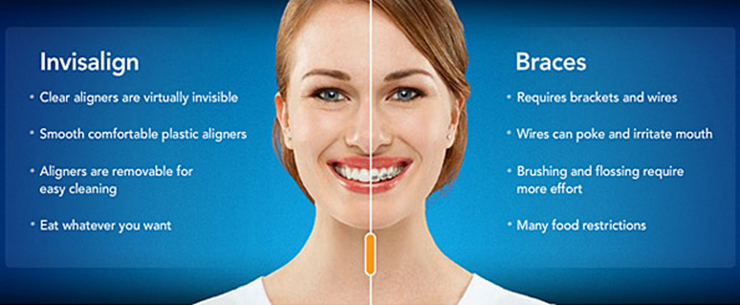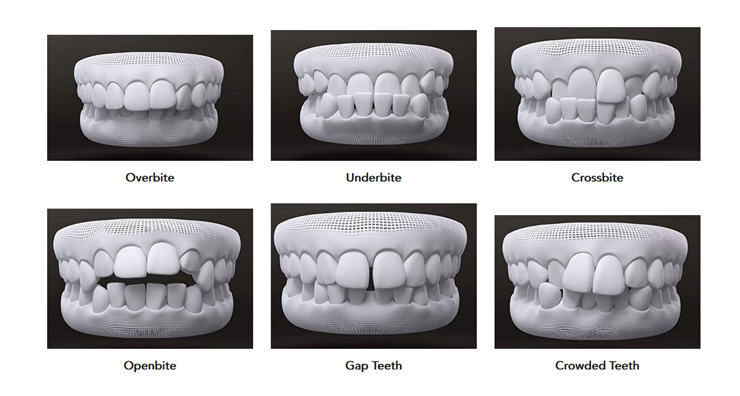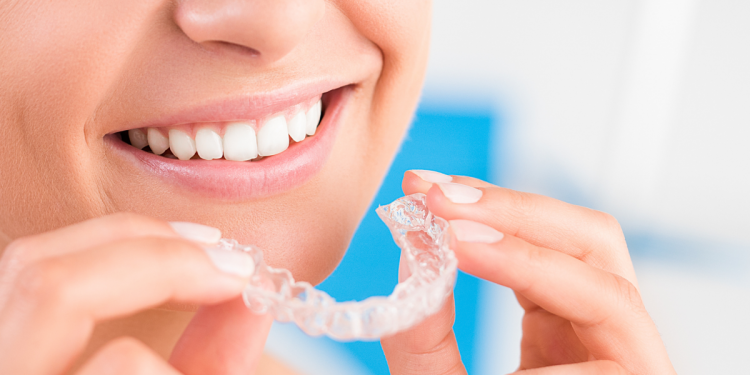Invisalign in Dubai is becoming increasingly popular in the UAE because of the many benefits of this kind of dental work. Transforming your smile and achieving the look you have always wanted is a lot easier with Invisalign. They are not only comfortable but also reasonably priced. That is why you should consider this option to replace your broken, stained, or crooked teeth.
Invisalign is an in-demand way to straighten teeth without having to use braces. Invisalign uses a series of aligners gradually moving over the teeth to straighten them. The process allows for a faster and more comfortable straightening process than braces. Invisalign is also a more cost-effective way to get teeth straightened long-term.
What is Invisalign?
Invisalign is a transparent aligner made of transparent plastic and plastic brackets. The aligners are custom-made to fit your teeth and are used to straighten crooked teeth. Invisalign uses clear aligners to straighten teeth gradually without damaging them. Every two weeks, the aligners must be changed and removable. Invisalign is a clear aligner made of clear plastic and plastic brackets. The aligners are custom-made to fit your teeth and are used to straighten crooked teeth. The aligners are used to correct crooked teeth and are made to suit your teeth perfectly.
Historical Overview of Invisalagin Company
Invisalign’s creator, Zia Chishti
Invisalign wasn’t developed by a dentist at all. Zia Chishti double majored in computer science and economics at Columbia University before graduating in 1992. He proceeded to Stanford to acquire his MBA shortly after that.
Chishti developed the idea for Invisalign. While at Stanford, he received orthodontic treatment and dreamed of a different approach using transparent aligners rather than braces.
Starting With Invisalign
With considerable assistance from his Stanford buddies, Chishti developed his idea for Invisalign while living in his dorm. He co-founded Align Technologies, LTD with three other Stanford students after receiving his degree in 1997.
In 1998, Invisalign received FDA approval and quickly became available. Venture capitalists have invested more than $140 million in the business by 2000. It was worth $1 billion when it went public on the NASDAQ in 2001.
Chishti departed the business in 2003, but Invisalign expanded due to a vigorous marketing effort. By the end of 2004, there were more than 175,000 users, up from 80,000 patients in 2002. While other devices with transparent aligners were released about this time, none of them had the ubiquity enjoyed by Invisalign.
Who is Invisalign for?
Invisalign is a trendy type of invisible brace. It is an orthodontic device composed of clear plastic teeth-straightening appliances that employ aligners rather than metal wires. The aligners are made of a thermoplastic elastomer designed to slowly and gradually expand and contract with the teeth to move them into the correct position. This process allows for a more comfortable and less painful treatment for patients. Invisalign is an excellent replacement for metal braces. It is a great option for children who are too young for metal braces and adults who want to get braces without metal wires. Invisalign is also an excellent option for patients who are allergic to metal or who are not in a position to get metal braces. Invisalign is available for adults and children and is a wise option. It is an excellent option for patients in a situation where metal braces are not an option or for patients who are allergic to metal.

How can Invisalign change your life?
Invisalign is a clear plastic aligner that is custom-made for each patient. It is worn over the teeth and the periodontal pockets and is only visible when the person smiles. The aligners are designed the teeth are gradually moved into the proper place that is most comfortable for the patient. They can be worn for two weeks and removed for two weeks.
What are the benefits of Invisalign?
Invisalign is a clear dental appliance that can be used for various reasons. These include straightening teeth, correcting issues with a misaligned jaw, and improving the appearance of your smile. It is a much more advanced and effective alternative to traditional braces. It is important to note that Invisalign is not a replacement for braces. It is a substitute that may be used in conjunction with braces. Invisalign is a clear aligner made of a series of customized trays placed over your teeth. These trays are then made to fit over your teeth and are typically worn for about 20 – 22 hours daily.

How do Invisalign aligners work?
The Invisalign aligners are made of a thermoplastic mix of nylon and polyvinyl chloride. It is both removable and replaceable, which means it can be removed and replaced when worn. Invisalign aligners are designed to be used for approximately two to three years. The Invisalign aligner allows the patient to move from one aligner to the next grade. The aligners are designed to gradually move the teeth over time to help achieve the desired result. Invisalign aligners are also designed to be removable and replaceable, which means they are not permanent. Invisalign helps to prevent the possibility of the aligners becoming stuck in the teeth.
How do I start the Invisalign process?
Although Invisalign is a lengthy procedure, it is worth it. There are many benefits to Invisalign, like how it can help you improve your oral health and how it can improve your confidence. It can also help you to get a better smile and make it easier to eat and speak with your mouth closed. The process of Invisalign starts with a consultation with your dentist. You will then have to choose the type of Invisalign you want to use and the treatment you will receive. You will then have to pay for the Invisalign treatment and have your teeth prepared for the Invisalign treatment. After ready your teeth for the Invisalign treatment, you must visit Invasilign Clinic in Dubai to adjust your aligners. Lastly, you will have to have a month without the aligners so the teeth can re-harden.





Your article helped me a lot, is there any more related content? Thanks!